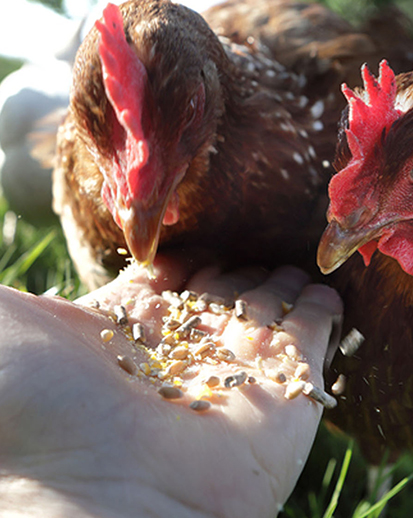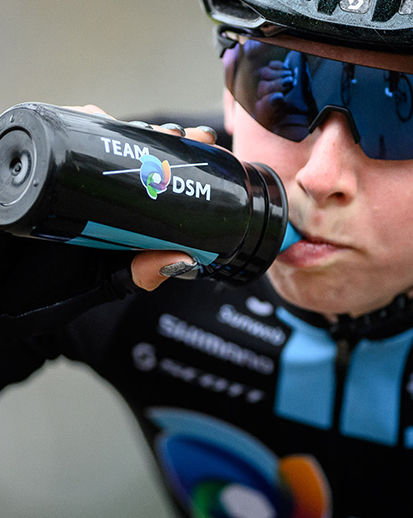In 2020, we introduced bio-based feedstock into the production of Dyneema®, the world’s strongest fiber™.
Dyneema® serves a wide range of applications, from ropes and lines to lightweight, high-performance fabrics for outdoor and sports use, such as cycling jerseys, tents and backpacks. Due to their extreme robustness, garments made with Dyneema® last longer than comparable traditional products, lengthening the cycle lifetime.
Introducing bio-based feedstock allows us to reduce our use of fossil-based resources. Production of 1 metric ton of bio-based Dyneema® generates 5 metric tons less CO2eq than the same volume of fossil-based Dyneema®.
Reducing our dependency on fossil-based resources
The linear economy is not sustainable. Every year, the human race is currently consuming 1.7 times the amount of resources that the earth can replenish. This ratio is projected to grow from 1.7 to 3 by 2050. In addition, feedstocks have a major impact on carbon footprint: to enable the low-carbon economy necessary for combating climate change, it is essential to transition away from fossil feedstocks.
Introducing bio-based feedstock allows us to reduce our dependency on fossil-based resources. Production of 1 metric ton of bio-based Dyneema® generates 5 metric tons less CO2eq than the same volume of fossil-based Dyneema®. In addition, bio-based Dyneema® has the lowest carbon footprint per unit strength compared to other synthetic fibers. For example, compared to generic high-modulus polyethylene (HMPE) fibers, bio-based Dyneema® emits 29 metric tons less CO2 per metric ton of fiber produced. This is the amount of CO2 released by charging 3.7 million smartphones, or absorbed by growing 480 tree seedlings for 10 years.
Our solution
Customers, governments and end-users are increasingly demanding renewable and bio-based materials. The World Business Council for Sustainable Development (WBCSD) estimates that the economic opportunity for bio-based products to complement and/or replace conventional ones will be worth USD 7.7 trillion by 2030. Dyneema® is the first, and currently only, bio-based ultra-high-molecular-weight polyethylene (UHMWPE) fiber in the world. We aim for at least 60% of Dyneema® fiber feedstock to be bio-based by 2030.
Do you know?
A circular economy is based on the principles of designing out waste and pollution. What processes support the Circular Economy?
Re-use, repair and recycling
Our impact
Through the mass balancing approach, bio-based Dyneema® fiber delivers the same consistent durability and performance, along with reduced environmental impact.
The fiber is certified according to the International Sustainability & Carbon Certification’s globally recognized ISCC Plus, a certification system covering all sustainable feedstocks, including renewables. ISSC Plus certifies that the bio-based fiber originates from a transparent and traceable supply chain while guaranteeing that the amount of bio-based materials sold is not more than the amount sourced.
Stronger together
Bio-based Dyneema® is enhancing the sustainability performance of our customers, and of their customers in turn. Gleistein Ropes, an industrial company in Bremen (Germany) that has been manufacturing ropes since 1824, has switched its entire portfolio of products with Dyneema® to the bio-based offering.

“By completely switching our products made with Dyneema® to the new bio-based Dyneema® fibers, I anticipate that we will reduce our carbon footprint to the tune of around 1,000 mt CO2eq in the first year alone, which is equivalent to taking more than 210 passenger cars off the roads. Importantly, our customers will continue to enjoy exactly the same extremely high levels of performance they are accustomed to from conventional Dyneema® fibers. Naturally, we are proud to be taking on the pioneering role of being the world’s first textile rope manufacturer to use sustainable raw materials for its entire portfolio of products made with Dyneema®. But we also hope that more companies will follow our example and join us in making a real contribution to climate protection and sustainability in our industry.”Klaus Walther
How we support the SDGs
12
12 – Ensure sustainable consumption and production patterns
Bio-based Dyneema® enables the transition from a fossil resource to a renewable resource and reduces carbon footprint.







